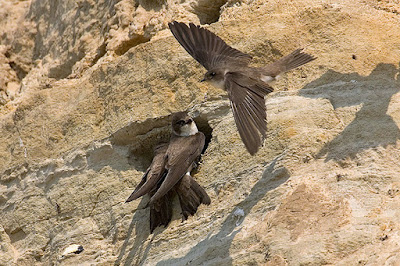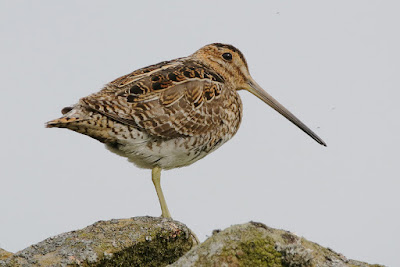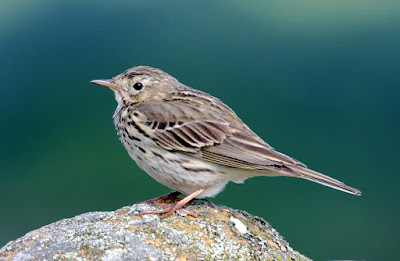2016 was a year without ringing at the Cockerham Sand Martin colony because the martins’ nest holes were too high up the quarry face for us to catch them. It’s the same this year with the birds mostly out of reach of the mist nets. But with so many being around Andy and I decided we’d experiment with catching some down at ground level today.
We met up at 0700 and set to with a single mist net in the base of the quarry where the martins had been feeding and flying through on their way to and from the quarry face. We had only partial success with a catch of 9 birds, 4 adults and 5 fresh juveniles.
We reckoned on something like 200 individuals milling around the colony and upwards of 60 occupied nest holes, even though counting those is subject to interpretation.
Sand Martin
There are Sand Martins in my picture below taken from 50 yards or more; a closer approach sees the martins into the air en masse. For readers who have never witnessed a Sand Martin colony the photo which gives some idea of the density of holes and nests, bearing in mind that not every hole is occupied.
Sand Martin colony
Also on site - 1 Grey Heron, 4 Oystercatcher, 1 Kestrel.
We’ll have another go at the “smarties” in a week or so when the weather permits.
Before I met up with Andy I’d spent an hour a mile away at Conder Green to catch up with recent changes. The Avocets are down to two pairs now and I saw only one youngster. It’s tempting to think that the adults spend so much time chasing off other birds that they somehow or other neglect their own young.
There are still at least 4 pairs of Oystercatchers but only one of those pair with 2 well grown young as other adults sit it out. Otherwise, 8 now summering Black-tailed Godwits, 6 Tufted Duck, 15 Redshank, 6 Shelduck, 2 Common Tern, 1 Common Sandpiper and 1 Little Egret.
In the passerine department - 3 Reed Warbler, 2 Reed Bunting 2 Whitethroat and 2 Pied Wagtail. And in “miscellaneous” – 1 Stock Dove, 4 Swift, 4 Swallow, 12 House Martin.
Linking today to Anni's Birding.
Linking today to Anni's Birding.























































.JPG)







.jpg)












